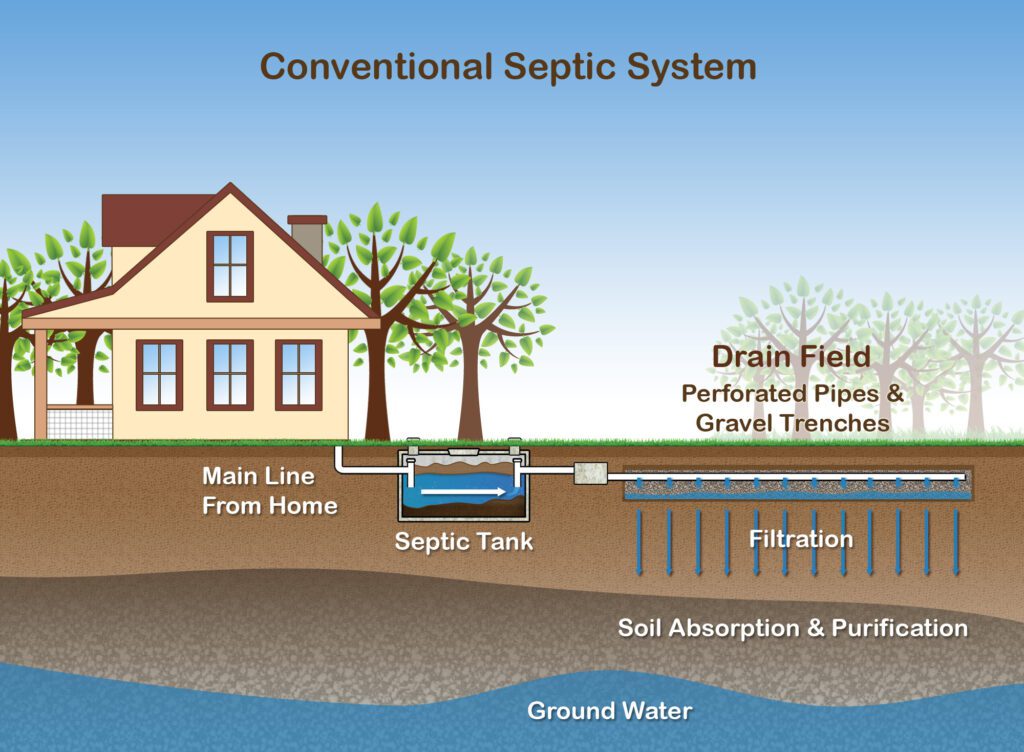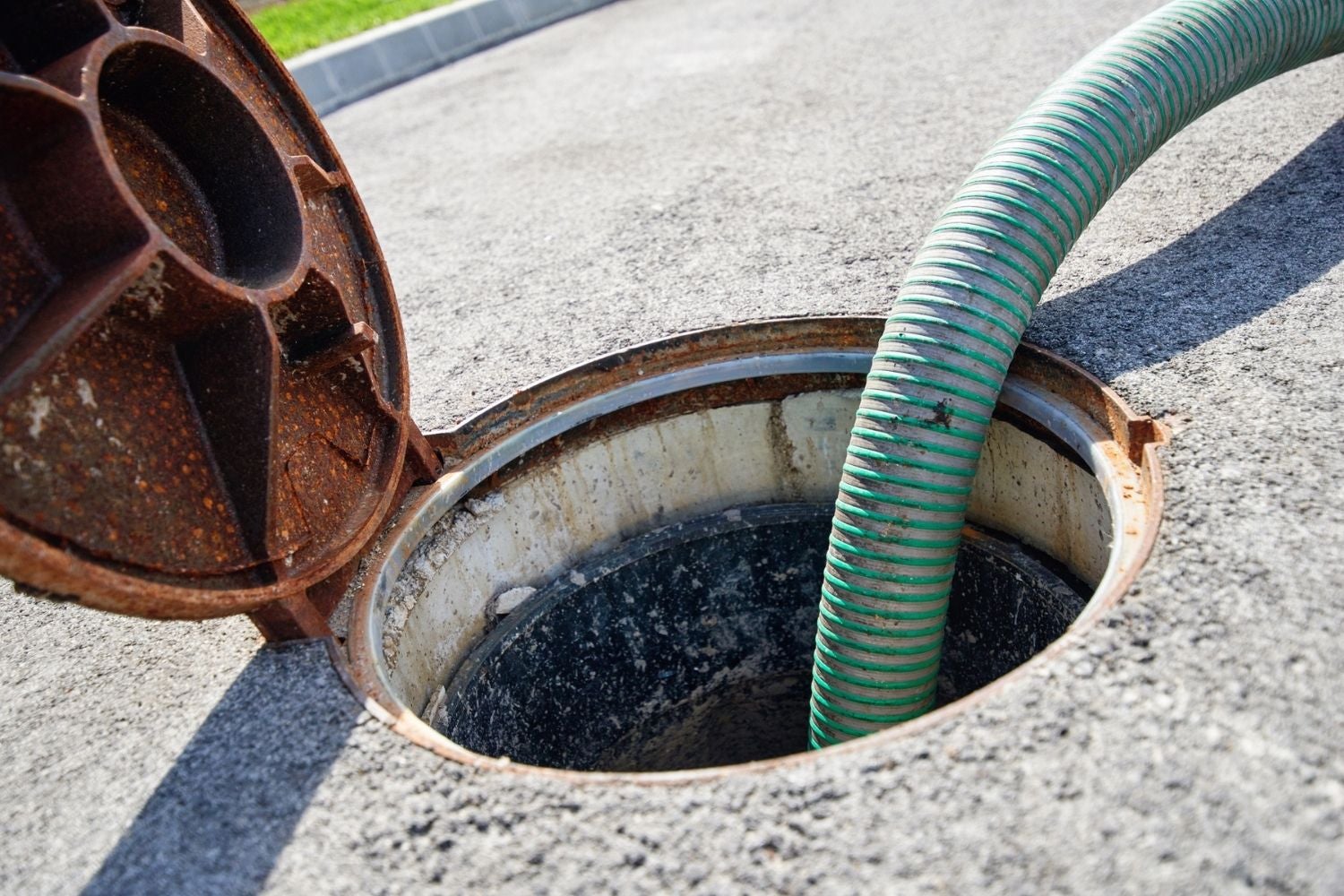In this article, you will learn about how often septic tanks need to be cleaned out and why it is important for efficient waste removal. Maintaining a clean septic tank is crucial to avoid costly repairs and ensure the proper functioning of your septic system.
Regular cleaning and pumping of septic tanks is essential to prevent the buildup of solids and sludge. The frequency at which you should clean your septic tank depends on various factors such as the size of the tank, the number of people in your household, and the water usage. On average, it is recommended to have your septic tank pumped every 3 to 5 years. However, it is important to have a professional inspect your tank and recommend a cleaning schedule based on your specific circumstances. By keeping your septic tank clean, you can prevent clogs, foul odors, and other issues, ensuring efficient waste removal and maintaining a healthy and functional septic system.
Understanding Septic Tanks
Septic tanks are an essential component of a household’s plumbing system, especially for those who live in rural areas or areas without access to a centralized sewage system. They are underground tanks that collect and store sewage waste from toilets, showers, sinks, and other plumbing fixtures. In simple terms, septic tanks serve as a mini wastewater treatment plant for individual households.
Components of a septic tank system
A septic tank system consists of several key components that work together to treat and dispose of sewage waste. These components include the septic tank itself, the distribution box, drain field or leach field, and the soil surrounding the drain field.
-
Septic tank: The septic tank is the primary component of the system. It is a large, watertight container made of concrete, fiberglass, or plastic. Sewage waste flows into the tank through a pipe connected to the home’s plumbing system.
-
Distribution box: The distribution box receives the treated wastewater from the septic tank and evenly distributes it to the drain field through a network of pipes.
-
Drain field: The drain field, also known as the leach field, is a shallow excavation in the soil where the treated wastewater is discharged. The soil acts as a natural filter, removing additional impurities from the wastewater before it percolates into the ground.
How septic tanks work
Septic tanks rely on a combination of natural processes and mechanical components to treat and dispose of sewage waste. When the waste enters the septic tank, it undergoes a three-step process.
-
Separation: As the waste settles in the tank, the heavier solids sink to the bottom, forming a layer of sludge. Lighter materials, such as fats, oils, and greases, float to the top, creating a layer of scum. This separation process is crucial for the efficient functioning of the septic tank.
-
Digestion: Bacteria and enzymes present in the tank help to break down the solids in the sludge layer. This biological process, known as digestion, converts the organic waste into liquid and gases.
-
Discharge: The treated wastewater, also known as effluent, exits the septic tank and flows into the drain field. In the drain field, the effluent is further treated by microorganisms in the soil, which remove any remaining contaminants.
Signs That Your Septic Tank Needs Cleaning
Regular maintenance and cleaning of septic tanks are essential to prevent backups, clogs, and costly repairs. However, determining when your septic tank needs cleaning can be challenging. Here are some common signs that indicate your septic tank may be due for cleaning.
Foul odor from the septic tank
One of the most straightforward signs that your septic tank needs cleaning is a foul odor emanating from the tank or the drain field. Sewage waste that has not been properly treated can produce a strong, unpleasant smell. If you notice a persistent odor near your septic tank, it’s a good indication that it’s time to have it cleaned out.
Slow draining fixtures
If you notice that your sinks, toilets, or showers are draining slower than usual, it could be a sign of a full septic tank. When the tank becomes overloaded with solids, it can restrict the flow of wastewater, causing fixtures to drain more slowly. If multiple fixtures in your home are experiencing sluggish drainage, it’s a clear indicator that you should have your septic tank cleaned.
Pooling water in the yard
Another visible sign of a septic tank problem is the presence of pooling water or damp areas in your yard, particularly around the drain field. When a septic tank is full or clogged, it can back up into the drain field, leading to water pooling on the surface. This pooling water may contain waste materials and can pose a health risk to you and your family. If you notice any areas of standing water in your yard, it’s crucial to have your septic tank inspected and cleaned promptly.
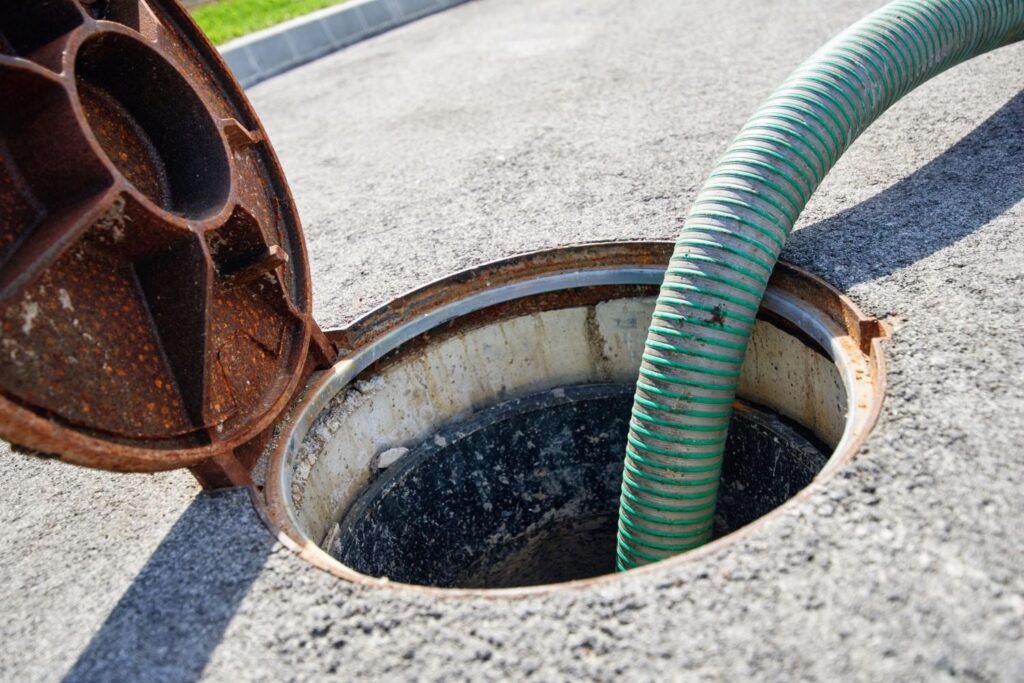
Factors That Influence Cleaning Frequency
The frequency at which you should clean your septic tank depends on several factors, including the size of the tank, the number of people in your household, water usage patterns, and the types of waste discharged into the system.
Size of the septic tank
The size of your septic tank is an essential factor in determining how often it should be cleaned. Smaller tanks have less storage capacity, which means they can fill up more quickly. On the other hand, larger tanks can hold more waste and may require less frequent cleaning. Consult with a septic tank professional to determine the appropriate cleaning schedule based on the size of your tank.
Number of people in the household
The number of people residing in your household directly affects the amount of wastewater generated. More people in the household mean more wastewater flowing into the septic tank. As a general rule of thumb, septic tanks should be cleaned out every three to five years for a typical family of four. However, if your household has more occupants, you may need more frequent cleaning.
Water usage patterns
Water usage patterns can also influence the frequency of septic tank cleanings. Excessive water usage can overwhelm a septic system, leading to more frequent cleanings. Activities such as excessive laundry, long showers, or running multiple water-consuming appliances simultaneously can increase the load on your septic tank. To avoid overburdening the system, it’s important to be mindful of your water usage.
Types of waste discharged
The waste discharged into your septic tank can impact its cleaning frequency. Flushing or draining non-biodegradable items, such as feminine hygiene products, baby wipes, cigarette butts, or coffee grounds, can lead to clogs and potentially damage your septic system. Using septic-safe toilet paper and being cautious of what you dispose of down the drains can help extend the time between cleanings.
Recommended Cleaning Schedule
While the factors mentioned above can provide a general idea of when to clean your septic tank, it’s always best to consult with a septic service professional to create a customized cleaning schedule based on your specific situation.
General guidelines for septic tank cleaning
As a starting point, it is generally recommended to have your septic tank inspected every one to three years by a professional. During the inspection, the technician will assess the tank’s condition, measure the sludge and scum levels, and determine if a cleaning is necessary.
Frequency based on tank size and usage
For an average household with a septic tank size of 1,000 gallons, it is typically recommended to clean the tank every three to five years. However, larger households or those with higher water usage may require more frequent cleanings. Conversely, smaller households or those with lower water usage may be able to extend the time between cleanings.
It’s important to note that these guidelines may vary depending on factors such as local regulations, soil conditions, and specific septic tank designs. Regular inspections and consultations with septic professionals are crucial to determine the most appropriate cleaning schedule for your septic tank.
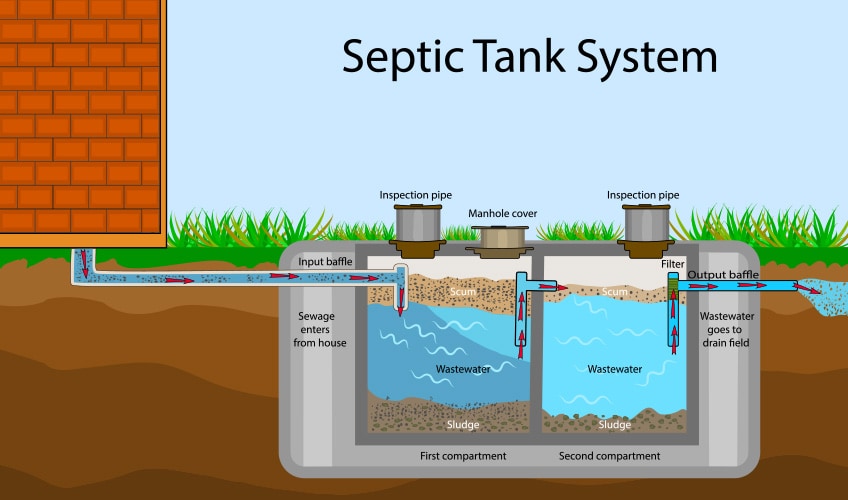
Benefits of Regular Cleaning
Regular cleaning and maintenance of septic tanks offer several benefits for homeowners. Here are some of the advantages of keeping your septic tank clean.
Prevention of backups and clogs
One of the primary benefits of regular septic tank cleaning is the prevention of backups and clogs. When a septic tank becomes full, solid waste can accumulate and block the flow of wastewater. This can lead to backups in your plumbing system, causing toilets to overflow, sinks to drain slowly, and other fixtures to become unusable. By cleaning your septic tank on a regular schedule, you can prevent these unpleasant and potentially costly issues.
Extended lifespan of the septic system
Proper maintenance, including regular cleanings, can significantly extend the lifespan of your septic system. By removing excess solids and preventing clogs, you reduce the strain on the system, allowing it to operate efficiently for a longer period. Regular cleanings also help identify any potential problems early on, allowing for prompt repairs and avoiding more extensive damage to the system.
Improved efficiency
A clean and well-maintained septic tank operates more efficiently in treating wastewater. When the tank is not overloaded, it has the capacity to adequately separate solids, allowing for more effective digestion and treatment of waste. This ensures that the effluent discharged into the drain field is of higher quality and poses minimal environmental risks.
Professional Cleaning Vs. DIY Methods
When it comes to cleaning your septic tank, you have the option of hiring a professional septic service or attempting a do-it-yourself (DIY) approach. Both options have their advantages and considerations.
Pros and cons of professional septic tank cleaning
Hiring a professional septic service has several benefits. Trained technicians have the knowledge and equipment to perform a thorough cleaning while adhering to safety standards. They can also inspect the tank for any potential issues and provide recommendations for maintenance and repairs.
However, professional cleaning can be more expensive than doing it yourself. The cost will vary depending on factors such as the size of your tank, the location, and the amount of sludge removed. If you choose this option, be sure to research and hire a reputable septic service that is licensed and insured.
Alternatives for DIY cleaning
While professional cleaning is recommended for most homeowners, there are some DIY methods that can be used in between professional cleanings to help maintain your septic system.
-
Use septic additives: There are commercially available septic additives that claim to help break down solids and improve the overall health of your septic tank. While these additives may offer some benefits, it’s important to use them according to the manufacturer’s instructions and not rely solely on them for septic tank maintenance.
-
Avoid excess water usage: Conserving water and reducing the load on your septic system can help extend the time between cleanings. Fix any leaks promptly, be mindful of water-intensive activities, and consider installing water-saving devices, such as low-flow showerheads and dual-flush toilets.
-
Practice proper waste disposal: Only flush or drain biodegradable materials down your plumbing system. Avoid disposing of non-biodegradable items or chemicals that can disrupt the natural processes in your septic tank.
It’s important to note that DIY methods should be used as a supplement to regular professional cleanings. They are not a substitute for proper maintenance and inspection by a trained septic service professional.
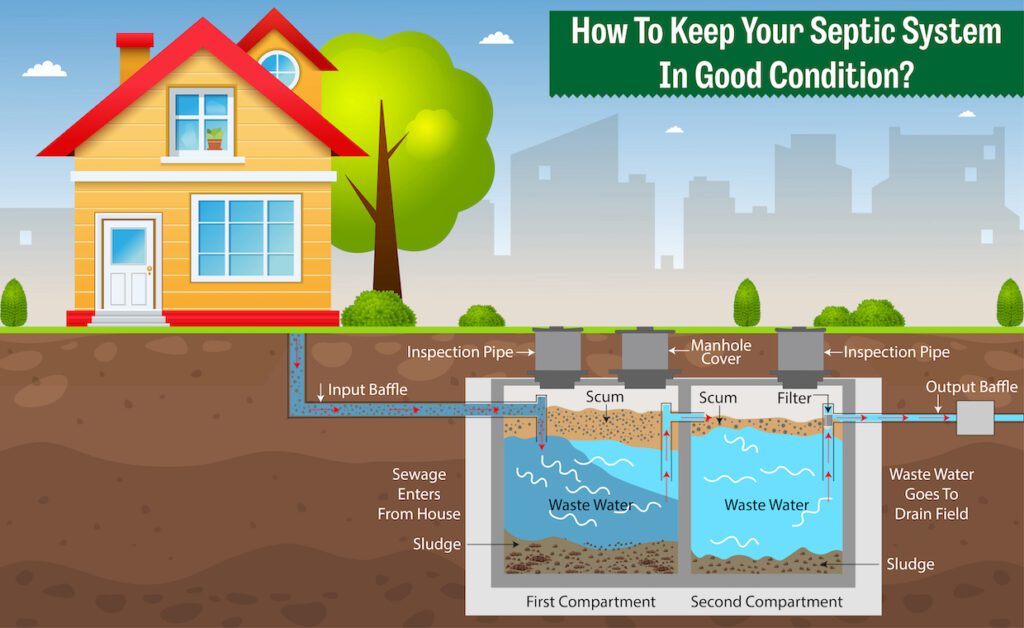
Steps Involved in Septic Tank Cleaning
Whether you hire a professional septic service or choose to clean your tank yourself, the following steps are involved in the septic tank cleaning process.
Inspection and assessment
Before starting the cleaning process, a thorough inspection and assessment of the septic tank is necessary. This involves measuring the sludge and scum levels, checking for any signs of damage or blockages, and identifying potential issues.
If you choose to hire a professional, they will have specialized equipment, such as a sewage pump truck or vacuum truck, to perform the inspection. If you decide to clean the tank yourself, you can use a long pole or stick with markings to measure the levels.
Pumping and disposal of waste
Once the inspection is complete, the next step is to pump out the contents of the septic tank. If you hired a professional, they will use their equipment to extract the sludge and scum from the tank and transport it to an authorized waste treatment facility for proper disposal. If you are cleaning the tank yourself, you can rent or purchase a portable pump to remove the waste.
During this step, it’s crucial to follow all safety precautions and wear protective gear, as the waste can contain harmful bacteria and gases.
Tank rinsing and maintenance
After pumping out the solids, the tank needs to be rinsed to remove any remaining waste and debris. This can be done by adding water to the tank and agitating it to loosen any stubborn residues. The rinsing process helps ensure that the tank is thoroughly cleaned and ready for use.
Additionally, this is an excellent opportunity to inspect the tank for any signs of damage, such as cracks or leaks. If any issues are identified, it’s essential to address them promptly to prevent further damage to the septic system.
Ensuring Efficient Waste Removal
In addition to regular cleaning, there are several practices homeowners can implement to ensure efficient waste removal and prolong the life of their septic system.
Proper waste disposal methods
Proper waste disposal is critical to maintaining a healthy septic system. Only flush or drain biodegradable materials, such as human waste and toilet paper, down your plumbing system. Non-biodegradable items, such as baby wipes, feminine hygiene products, or paper towels, can clog the system and should be disposed of in the trash.
Chemicals, such as paint, pesticides, or harsh cleaning products, should never be flushed or drained into the septic tank. These chemicals can disrupt the natural balance of bacteria in the tank and interfere with the wastewater treatment process.
Reducing water usage and waste generation
Conserving water and reducing waste generation can significantly impact the efficiency of your septic system. Consider implementing the following practices to minimize the load on your septic tank:
- Fix leaks promptly to prevent water wastage.
- Install water-saving devices, such as low-flow showerheads and faucets.
- Space out activities that require a significant amount of water, such as laundry, throughout the week.
- Avoid excessive use of water-consuming appliances, such as dishwashers or washing machines, simultaneously.
By being mindful of your water usage and waste generation, you can help prevent overloading your septic system and reduce the frequency of cleanings.
Maintaining a healthy septic system
Regular maintenance is essential for the proper functioning of your septic system. In addition to periodic cleaning, here are some general maintenance tips to keep your septic tank in good condition:
- Keep records of septic system inspections and cleanings for future reference.
- Direct rainwater away from the drain field to prevent oversaturation.
- Avoid parking heavy vehicles or placing heavy objects over the septic tank and drain field.
- Prune tree roots to prevent them from damaging the septic system.
By following these maintenance practices, you can ensure that your septic system operates efficiently, minimizing the risk of backups, clogs, and costly repairs.
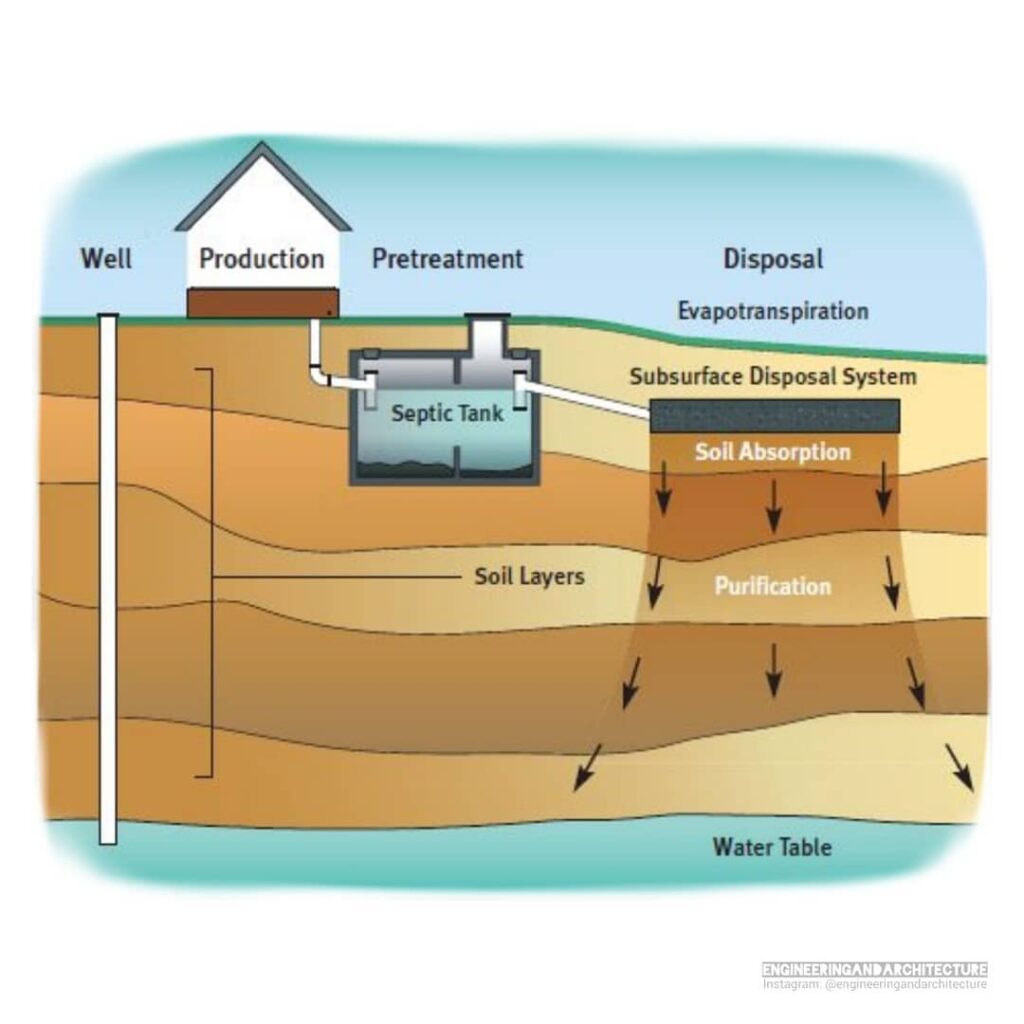
Common Mistakes to Avoid
To maximize the lifespan of your septic system, it’s important to avoid common mistakes that can be detrimental to its health and function.
Ignoring signs of a full septic tank
Ignoring signs that your septic tank needs cleaning can lead to costly and inconvenient issues. It’s essential to pay attention to odors, slow drainage, or pooling water in your yard and take immediate action. Promptly scheduling a cleaning and inspection can help prevent more severe problems from arising.
Using harsh chemicals or excessive water
Harsh chemicals, such as drain cleaners or bleach, can disrupt the natural balance of bacteria in your septic tank and hinder the wastewater treatment process. It’s best to avoid using these chemicals or use them sparingly. Additionally, excessive water usage can overload your septic system, leading to more frequent cleanings. Be mindful of your water consumption and practice water conservation measures.
Neglecting regular maintenance
Regular maintenance, including inspections and cleanings, is crucial for the health and longevity of your septic system. Neglecting these routine tasks can result in system failures and costly repairs. Stay on top of your septic system’s maintenance needs and address any issues promptly.
Conclusion
Regular cleaning of septic tanks is an essential part of ensuring efficient waste removal and prolonging the lifespan of the system. By understanding the components of a septic tank system, recognizing the signs that your tank needs cleaning, and considering factors that influence cleaning frequency, you can develop a tailored maintenance plan for your septic system.
While professional septic tank cleaning is recommended, implementing DIY methods in between cleanings can help maintain the system’s health. Remember to follow the steps involved in septic tank cleaning, be mindful of waste disposal practices and water usage, and avoid common mistakes that can damage your septic system.
By prioritizing regular cleaning, proper maintenance, and responsible waste disposal, you can enjoy a well-functioning septic system that efficiently removes waste and protects the health of your home and the environment.
